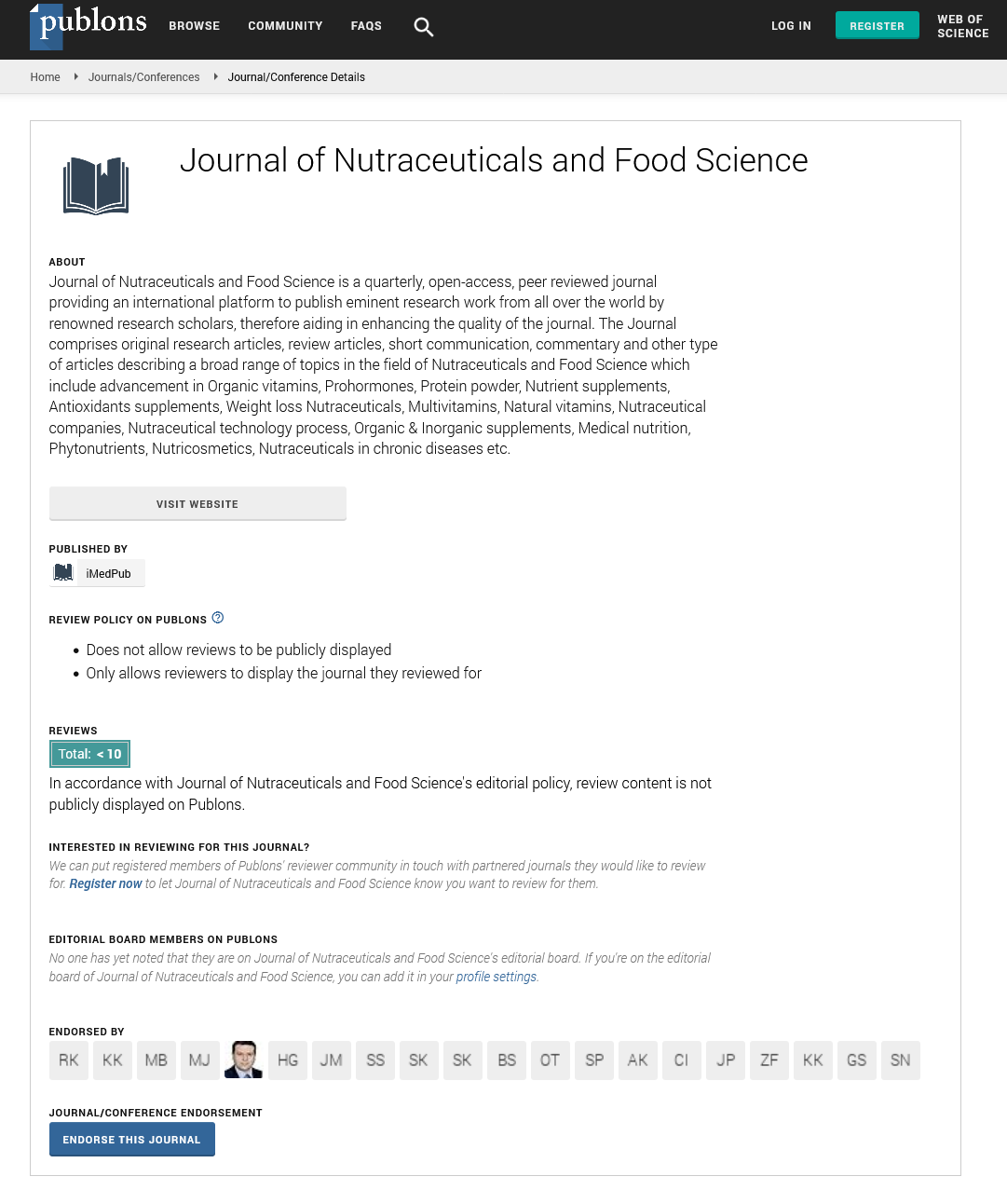Abstract
Extraction Optimization and Physicochemical Properties of Pectin from Watermelon (Citrullus lanatus) Rind: Comparison of Hydrochloric and Citric acid Extraction
Extraction of pectin from watermelon (Citrullus lanatus) rind using citric acid, an organic acid was optimized using Response Surface Methodology (RSM) and compared to that using hydrochloric acid, a mineral acid. A five-level, four-factor central composite design was employed to optimize the conditions for maximum yield of pectin. The effects of pH, reaction temperature, reaction duration and substrate to extractant ratio were investigated. The optimized conditions using citric acid as an extractant were at pH 2, 80ËÂÃÆââ¬Å¡Ãâà ¡C, 3h and substrate to extractant ratio of 1:25. The optimized conditions using hydrochloric acid as an extractant were similar except for a shorter extraction time of 2h. At these extraction conditions, the yield of pectin extracted using citric acid (8.38 ± 0.43) was significantly higher than that using hydrochloric acid (6.52 ± 0.15) but showed similar uronic acid content (50.2-58.8%), degree of methylation (66.3-71.5%) and degree of acetylation (106.0-106.8%). Citric or hydrochloric acid-extracted watermelon rind pectin showed near Newtonian like flow behavior at 1% concentration and this behavior was similar to citrus peel pectin. This study demonstrated the use of citric acid as the more effective acid than hydrochloric acid to extract pectin and also the transformation of fruit waste to use material from watermelon rind.
Author(s):
Khye Yeong Lee, Wee Sim Choo
Abstract | PDF
Share this

Google scholar citation report
Citations : 393
Journal of Nutraceuticals and Food Science received 393 citations as per google scholar report
Journal of Nutraceuticals and Food Science peer review process verified at publons
Abstracted/Indexed in
- Google Scholar
- Publons
- Secret Search Engine Labs
Open Access Journals
- Aquaculture & Veterinary Science
- Chemistry & Chemical Sciences
- Clinical Sciences
- Engineering
- General Science
- Genetics & Molecular Biology
- Health Care & Nursing
- Immunology & Microbiology
- Materials Science
- Mathematics & Physics
- Medical Sciences
- Neurology & Psychiatry
- Oncology & Cancer Science
- Pharmaceutical Sciences


